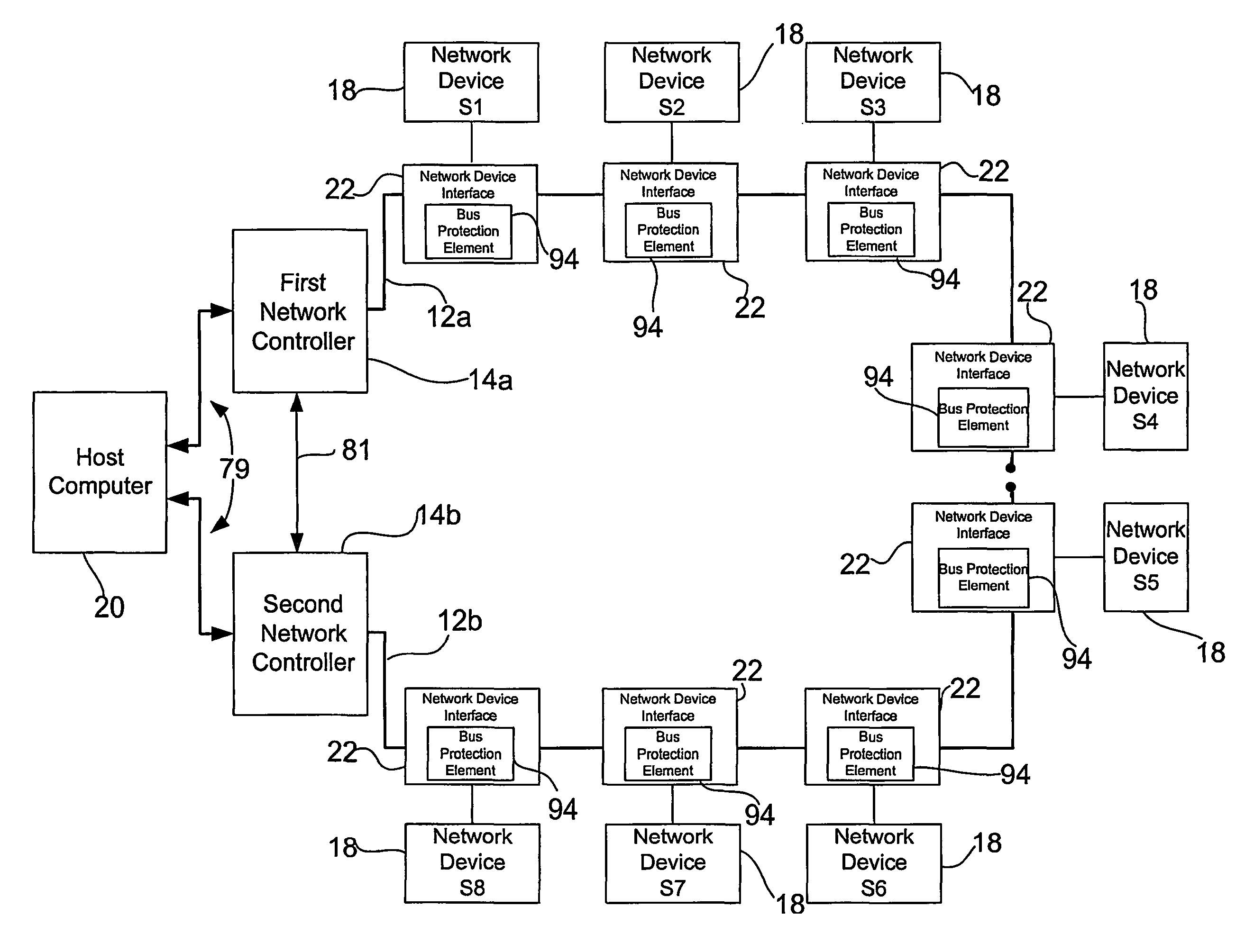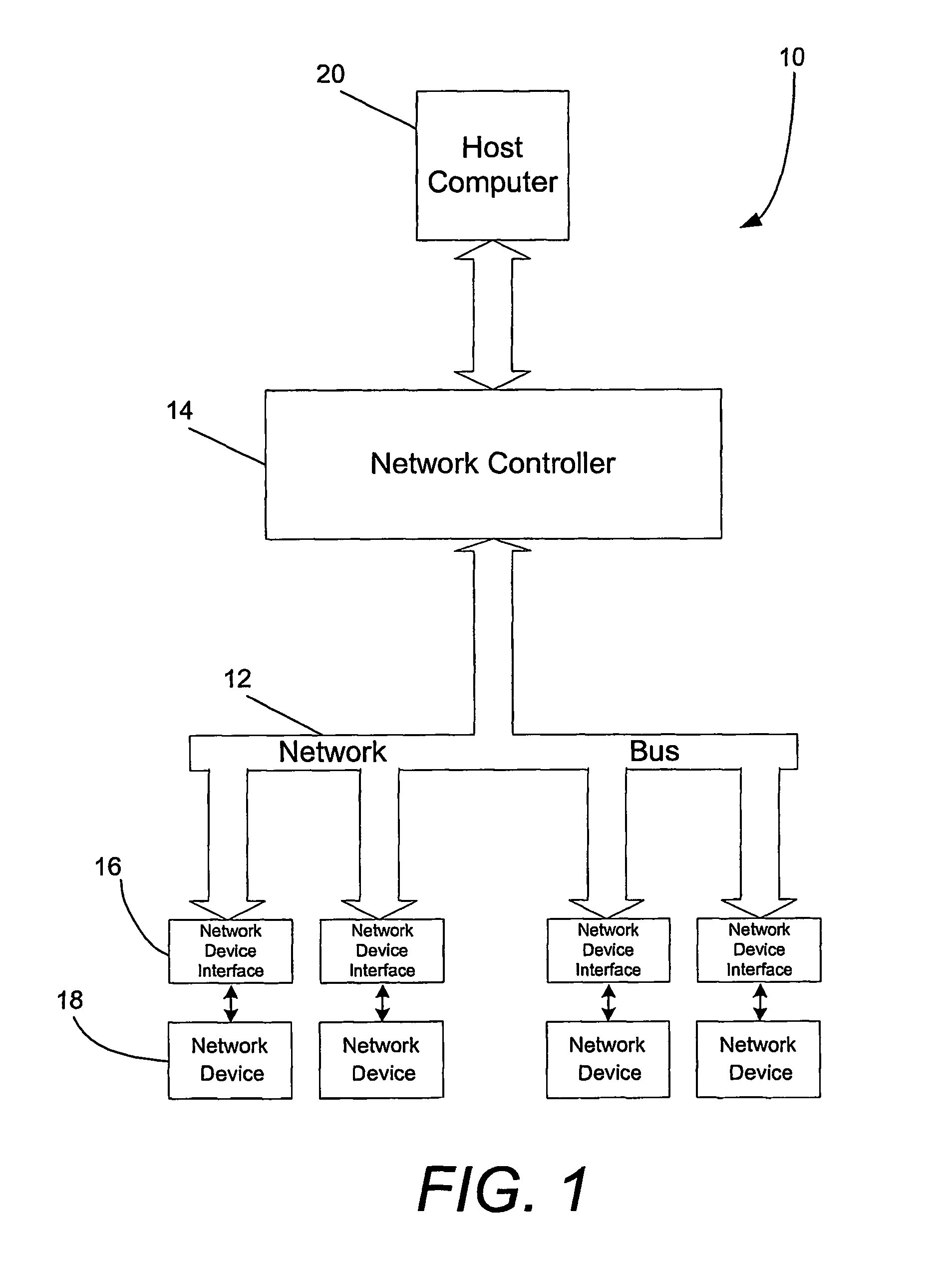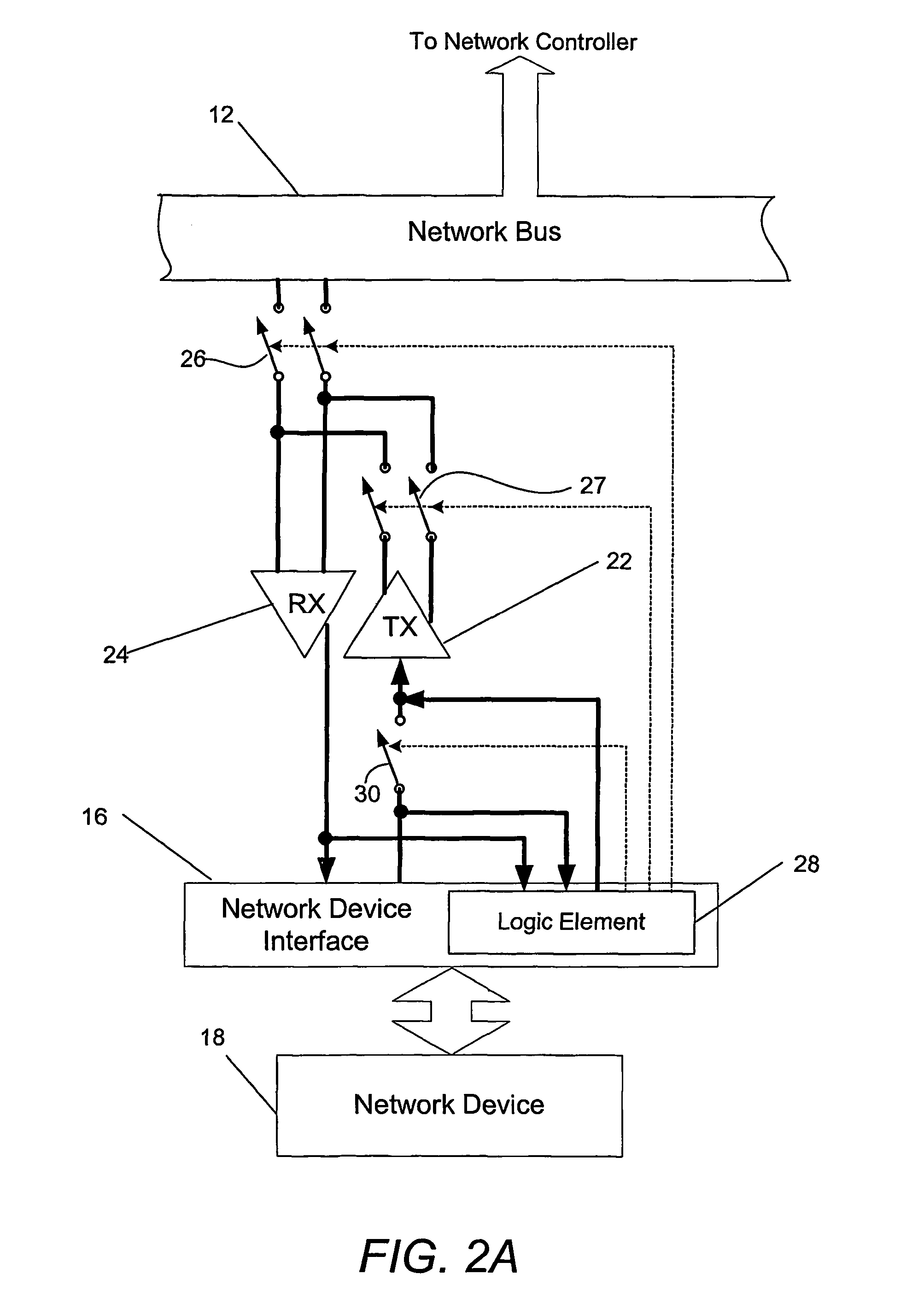As systems have become more integrated and the communications requirements have been increased, the amount of dedicated wiring that would be required can quickly become excessively large, both in terms of the space required for the wiring and the cost of the wiring and the attendant installation.
Moreover, as the amount of dedicated wiring increased, the overall complexity of the
system also generally increased as well as the likelihood that some portion of the wiring might be damaged or broken during or following installation.
Given that many of the transmitted signals have a low amplitude to start with, this
noise can corrupt the
signal and decrease the
signal to
noise ratio to levels that cause loss of resolution in the
signal.
Further, as many of these network devices are scattered some distance from the controller, the electrical lines connecting the network devices to the controller may be sufficiently long to cause signal degradation due to
DC resistance in the wiring.
But, many conventional digital networks suffer from a variety of problems themselves.
For example, many existing digital networks operate according to complicated protocols which require each network device to have a relatively high level processor, thereby increasing the cost of the network devices.
This overhead can severely limit the number of data samples that can be transmitted on the bus.
These networks also have other problems.
For example, they generally do not support both acquisition and control, and they typically only support networks that extend over relatively short lengths.
Further, these networks typically have bulky network device interfaces, slow
network data rates and / or a low network device count.
Additionally, many computer systems that include digital networks do not operate in a time-deterministic manner.
As such, these computer systems generally lack the capability to schedule a trigger command to the network components that repeats or is interpreted and executed with any precision timing.
Regardless of the digital or analog nature of network, the network bus may be damaged during or following installation.
Due to accidents or other unforeseen circumstances, one or more of the wires may be broken, thereby creating an open circuit.
Thus, components on one side of the open circuit will be unable to communicate via the broken conductor with components on the other side of the open circuit.
Additionally, signals transmitted over the broken conductor will be reflected by the broken end of the conductor due to the
characteristic impedance mismatch.
The reflected signals will then be returned along the conductor, thereby interfering, both constructively and destructively, with other signals being transmitted via the conductor.
While the components on one side of the open circuit may be able to communicate at relatively low data rates, such as ten kilobits per second, reflected signals will generally prevent effective communications between the components at higher data rates such as ten megabits per second or the like.
The destructive interference caused by the reflected signals caused by the open circuit will render the signals on the broken conductor more susceptible to noise, thereby further limiting effective communications.
Since a number of applications require that communications be conducted via the network bus at relatively high data transfer rates, the intentional slowing of the data over the network bus to reduce, if not negate, the deleterious
impact of reflected signals may be inappropriate.
However, the physical repair of the network bus oftentimes requires that the network bus be removed from service for some period of time, which action may also be inappropriate for certain applications, such as time-sensitive applications or other applications that demand
continuous monitoring or feedback.
A network bus may have other types of failures in addition to failures attributable to an open circuit.
In this instance, the network controller and the network devices will no longer be able to communicate via the pairs of conductors that are shorted.
In addition to
short circuit and open circuit conditions on the network bus, a network device that is electrically connected to the network bus may fail and, as a result, may create problems for the network bus and for other network devices connected to the network bus.
In this regard, some failure
modes of the network devices are self-limiting in that failure of a network device does not adversely
impact continued communications of the other network devices over the network bus.
However, other failure
modes of the network devices may create problems on the network bus and effectively prevent other network devices from communicating via the network bus.
As will be apparent, the process of identifying the network device that is babbling and thereafter removing the babbling network device from the network bus can be time-consuming, during which time the network bus will be unavailable for communications between the other network devices and the network controller.
Yet another type of failure of a network device that could cause the whole network to fail is that of a
short circuit condition inside the network device that causes it to draw too much current.
If the network device draws more than the amount of current that can properly be supplied by the power supply in the network controller and power conductors of the network bus, the power
voltage supplied to the other network devices will drop to levels that will cause them to be inoperable.
As will be apparent, the process of identifying the network device that is shorted and thereafter removing the shorted network device from the network bus can be time-consuming, during which time the network bus will be unavailable for communications between the other network devices and the network controller.
As described above in conjunction with the repair of a network bus having an open circuit condition, the removal of a network bus from service in order to repair a short circuit condition or to remove a network device that is babbling from the network bus will require that the network bus be out of service for some period of time and would therefore be inappropriate for certain applications including time-sensitive applications or other applications that demand
continuous monitoring or feedback.
 Login to View More
Login to View More  Login to View More
Login to View More 


